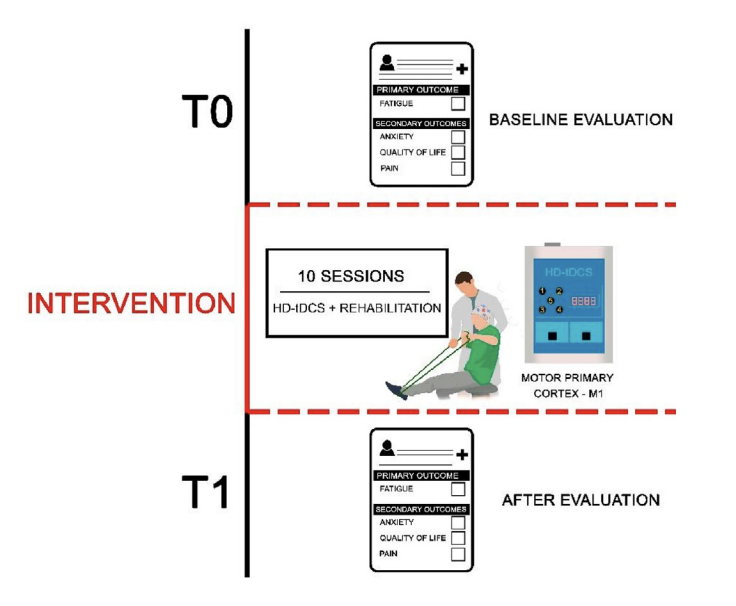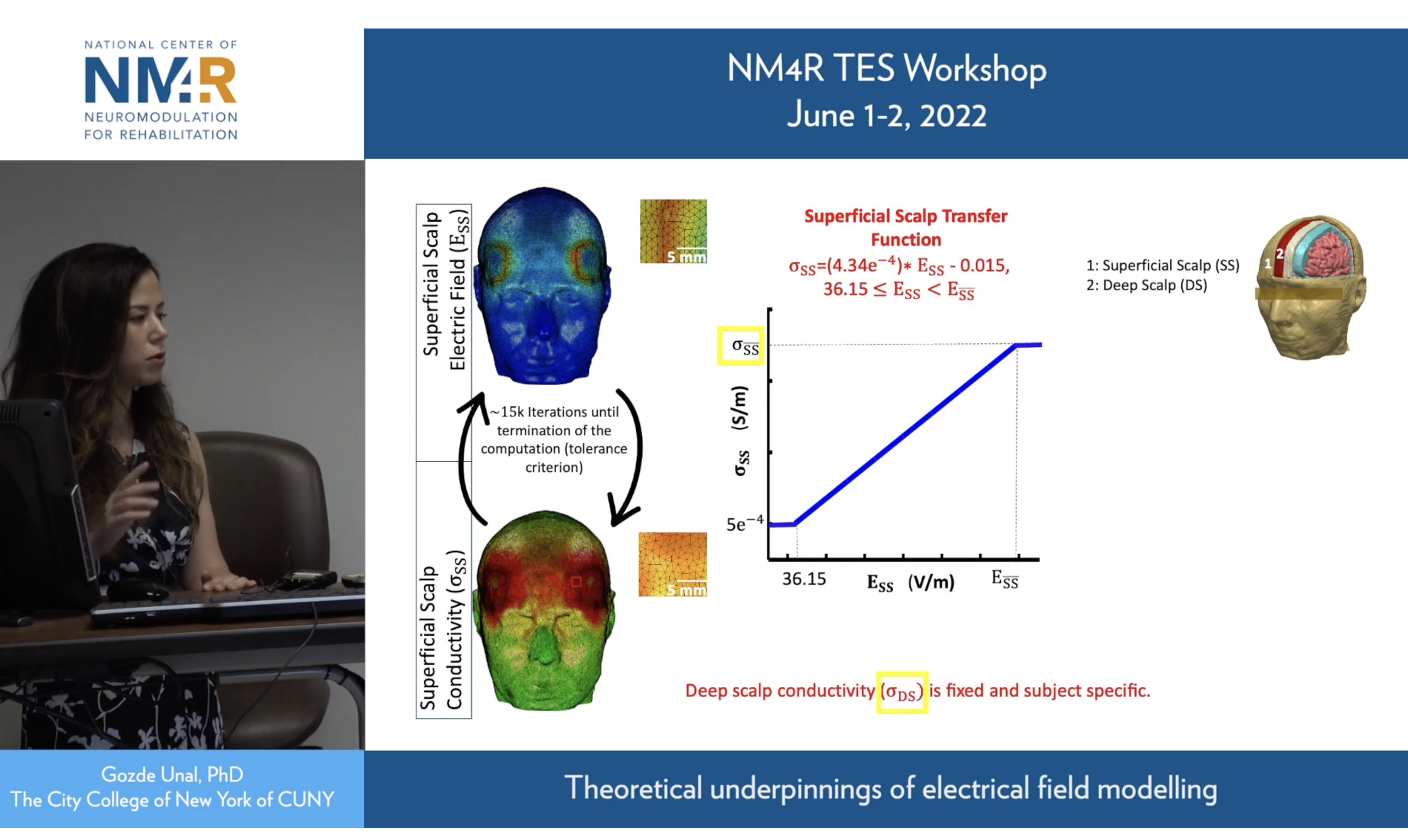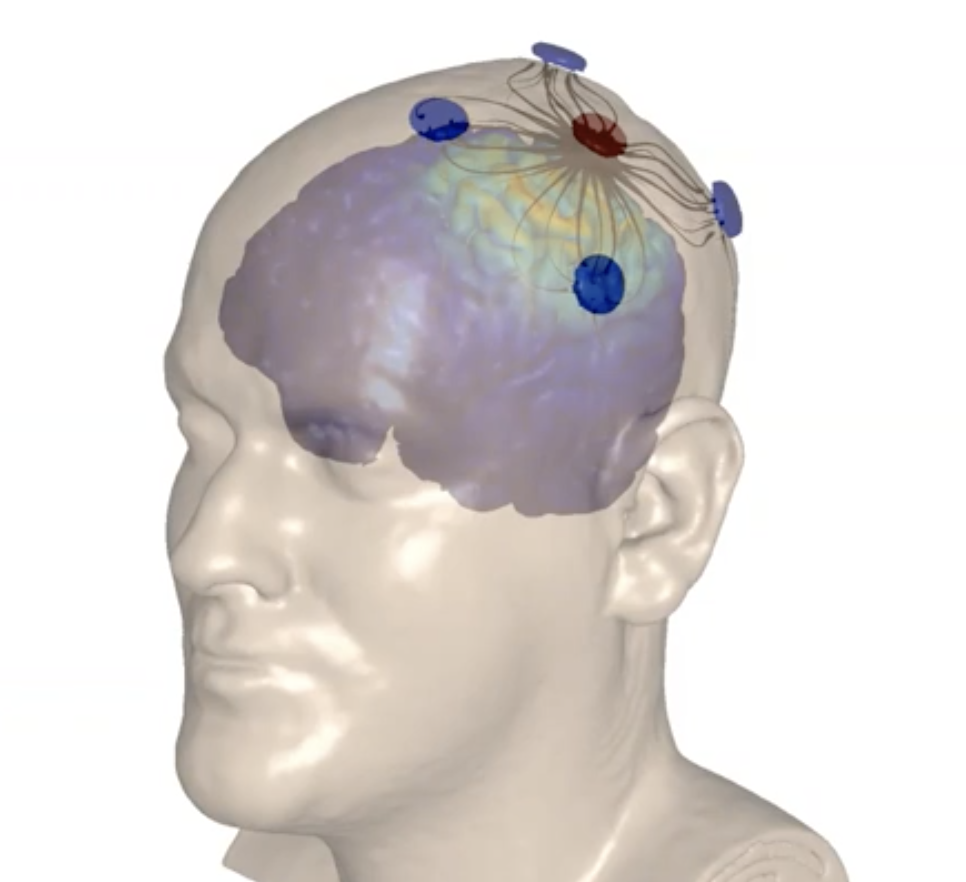Read the article here
CCNY Neural Engineering will be represented at the 5th International Brain Stimulation Conference, 19–22 February 2023. Lisbon, Portugal
Dr. Gozde Unal will present a poster on “Quasi-static assumption in electroconvulsive therapy- computational modeling”. Download poster PDF
Dr. Marom Bikson will present an on-demand symposium with poster on “Neuro-vascular Modulation and Brain Response to Transcranial Electrical Stimulation”. Watch the video here. Download slides PDF here.
And the following additional poster presentations:
P3.002 AT-HOME TELEHEALTH TRANSCRANIAL DIRECT CURRENT STIMULATION FOR TREATMENT RESISTANT DEPRESSION. Amy Vogel-Eyny, Hyein Cho, Giuseppina Pilloni, Allan George, Matthew Lustberg, Abhishek Datta, Marom Bikson, Kamran Nazim, R. Erik Charlson, Leigh Charvet
P1.177 REMOTELY SUPERVISED TDCS FOR PERSISTENT POST-TRAUMATIC HEADACHE IN VETERANS (RESTORE). Michelle Androulakis, Kiersten Mangold, Adam Harrison, Robert Davis Moore, Siyuan Guo, Jiajia Zhang, Abhishek Datta, Marom Bikson, Leigh Charvet
P1.055 Transcranial Electrical Stimulation in Stroke EaRly After onset Clinical Trial (TESSERACT). Mersedeh Bahr-Hosseini, Kambiz Nael, Marco Iacoboni, David Liebeskind, Marom Bikson, Jeffrey Saver. DOI:https://doi.org/10.1016/j.brs.2023.01.358
Eur J Neurol 2023 Jan 24. doi: 10.1111/ene.15710.
Transcranial direct current stimulation and neurovascular modulation
Marom Bikson
Read PDF
Non-invasive brain stimulation for fatigue in post-acute sequelae of SARS-CoV-2 (PASC) . Brain Stimulation. 16 (203) 100-107
Kelly Santana a , Eduardo França a , Joao Sato ~ b , Ana Silva a , Maria Queiroz a , Julia de Farias a , Danniely Rodrigues a , Iara Souza a , Vanessa Ribeiro c , Egas Caparelli-Daquer d , Antonio L. Teixeira e, f , Leigh Charvet g , Abhishek Datta h, i , Marom Bikson h , Suellen Andrade a,
a Federal University of Paraíba, Joao Pessoa, Brazil ~ b Center of Mathematics, Computing and Cognition, Federal University of ABC, Santo Andre, Brazil c Department of Health, Government of Paraíba, Joao Pessoa, Brazil ~ d Nervous System Electric Stimulation Lab, Rio de Janeiro State University, Rio de Janeiro, Brazil e Department of Psychiatry and Behavioral Sciences, McGovern Medical School, University of Texas Health Science Center, Houston, United States f Faculdade Santa Casa BH, Belo Horizonte, Brazil g Department of Neurology, New York University Langone Health, New York, United States h Department of Biomedical Engineering, The City College of New York of CUNY, New York, United States i Research & Development, Soterix Medical, Inc., New York, United States
Abstract
Background: and purpose: Fatigue is among the most common persistent symptoms following postacute sequelae of Sars-COV-2 infection (PASC). The current study investigated the potential therapeutic effects of High-Definition transcranial Direct Current Stimulation (HD-tDCS) associated with rehabilitation program for the management of PASC-related fatigue. Methods: Seventy patients with PASC-related fatigue were randomized to receive 3 mA or sham HD-tDCS targeting the left primary motor cortex (M1) for 30 min paired with a rehabilitation program. Each patient underwent 10 sessions (2 sessions/week) over five weeks. Fatigue was measured as the primary outcome before and after the intervention using the Modified Fatigue Impact Scale (MFIS). Pain level, anxiety severity and quality of life were secondary outcomes assessed, respectively, through the McGill Questionnaire, Hamilton Anxiety Rating Scale (HAM-A) and WHOQOL. Results: Active HD-tDCS resulted in significantly greater reduction in fatigue compared to sham HD-tDCS (mean group MFIS reduction of 22.11 points vs 10.34 points). Distinct effects of HD-tDCS were observed in fatigue domains with greater effect on cognitive (mean group difference 8.29 points; effect size 1.1; 95% CI 3.56e13.01; P < .0001) and psychosocial domains (mean group difference 2.37 points; effect size 1.2; 95% CI 1.34e3.40; P < .0001), with no significant difference between the groups in the physical subscale (mean group difference 0.71 points; effect size 0.1; 95% CI 4.47e5.90; P ¼ .09). Compared to sham, the active HD-tDCS group also had a significant reduction in anxiety (mean group difference 4.88; effect size 0.9; 95% CI 1.93e7.84; P < .0001) and improvement in quality of life (mean group difference 14.80; effect size 0.7; 95% CI 7.87e21.73; P < .0001). There was no significant difference in pain (mean group difference 0.74; no effect size; 95% CI 3.66e5.14; P ¼ .09). Conclusion: An intervention with M1 targeted HD-tDCS paired with a rehabilitation program was effective in reducing fatigue and anxiety, while improving quality of life in people with PASC.
Quasi-static approximation error of electric feld analysis for transcranial current stimulation.
J. Neural Eng. 20 (2023) 016027 PDF journal link
Gabriel Gaugain 1, , Lorette Quéguiner 1 , Marom Bikson 2 , Ronan Sauleau 1 , Maxim Zhadobov 1 , Julien Modolo 3 and Denys Nikolayev 1
1 Univ Rennes, CNRS, IETR (Institut d’électronique et des technologies du numérique) - UMR 6164, 35000 Rennes, France 2 Department of Biomedical Engineering, The City College of New York, CUNY, New York, NY, United States of America 3 Univ Rennes, INSERM, LTSI (Laboratoire traitement du signal et de l’image) – U1099, 35000 Rennes, France ∗
Abstract Objective. Numerical modeling of electric fields induced by transcranial alternating current stimulation (tACS) is currently a part of the standard procedure to predict and understand neural response. Quasi-static approximation (QSA) for electric field calculations is generally applied to reduce the computational cost. Here, we aimed to analyze and quantify the validity of the approximation over a broad frequency range. Approach. We performed electromagnetic modeling studies using an anatomical head model and considered approximations assuming either a purely ohmic medium (i.e. static formulation) or a lossy dielectric medium (QS formulation). The results were compared with the solution of Maxwell’s equations in the cases of harmonic and pulsed signals. Finally, we analyzed the effect of electrode positioning on these errors. Main results. Our findings demonstrate that the QSA is valid and produces a relative error below 1% up to 1.43 MHz. The largest error is introduced in the static case, where the error is over 1% across the entire considered spectrum and as high as 20% in the brain at 10 Hz. We also highlight the special importance of considering the capacitive effect of tissues for pulsed waveforms, which prevents signal distortion induced by the purely ohmic approximation. At the neuron level, the results point a difference of sense electric field as high as 22% at focusing point, impacting pyramidal cells firing times. Significance. QSA remains valid in the frequency range currently used for tACS. However, neglecting permittivity (static formulation) introduces significant error for both harmonic and non-harmonic signals. It points out that reliable low frequency dielectric data are needed for accurate transcranial current stimulation numerical modeling.
Prof. Marom Bikson will moderate and present content at the NANS 2023 meeting.
Jan 12, 2023 8 AM - Pre-conference workshop “Engineering Principles of DBS and SCS in Clinical Practice: General Introduction and Emerging Concepts” co-directed by Scott Lempka and Marom Bikson.
Dr. Bikson will also present: “Neurostimulation fundamentals: Dose, current flow, and neural activation”. Download PDF
Jan 13, 2023, 10:30 AM. Session “F6 - Neural Engineering: Engineering Principles of DBS and SCS in Clinical Practice: Emerging Concepts”. Dr. Bikson speaks on “SCS: Synaptic Evoked Potentials” Downloads slides PDF
Jan 13, 2023, 4 PM. Session “F7 - Neuromodulation Fundamentals: Non-Neuronal Effects”. Dr. Bikson speaks on “SCS: Neurovascular modulation and heating” Download slides PDF
Also on Jan 14, 2024 10:30 AM Dr. Bikson moderates session “S6 - Novel Indications of Non-Invasive Neurostimulation Technologies”
Video lectures given by Marom Bikson and Gozde Unal at National Center of Neuromodulation for Rehabilitation (Medical University of South Carolina) are not availabel.
Dr. Marom Bikson speak on “Transcranial electrical stimulation (tES) technology: A difference to be a difference must make a difference.“ Link
Dr. Gozde Unal speak on '“Computational models" Link
On November 3rd, Marom Bikson celebrated and recognized those lab members who successfully helped plan and execute the 2022 Neuroergonomics and NYC Neuromodulation Conference that took place in July/August 2022 on City College’s campus. The Lab Group celebrated eating delicious Mediterranean food at a restaurant in Brooklyn.
[Not pictured, but deserve full recognition: Ahmed Benmansour (Conference Organizer), Cynthia Poon and Carliza Canela (B.E. Alumni - Undergraduate Research Assistants)]
Pictured from left to right: Brian Aguilar Avila (Administrative Specialist), Mohigul Nasimova, Vividha Bhaskar, Kristian Jacome ((Undergraduate Research Assistants), Marom Bikson (Principal Investigator), Kishaloy Arghu (Undergraduate Research Assistant), Kevin Walsh (PhD Student - Graduate Research Assistant), Jack Beaty (MS Student - Graduate Research Assistant), Gozde Unal (Postdoctoral Fellow), Mohamad FallahRad (PhD Student and Lead Engineer), and Myesha Thasin (MS Student - Graduate Research Assistant).
Pictured from left to right: Brian Aguilar Avila (Administrative Specialist), Mohigul Nasimova, Vividha Bhaskar, Kristian Jacome ((Undergraduate Research Assistants), Marom Bikson (Principal Investigator), Kishaloy Arghu (Undergraduate Research Assistant), Kevin Walsh (PhD Student - Graduate Research Assistant), Jack Beaty (MS Student - Graduate Research Assistant), Gozde Unal (Postdoctoral Fellow), Mohamad FallahRad (PhD Student and Lead Engineer), and Myesha Thasin (MS Student - Graduate Research Assistant).
On Nov 18th 2022, Prof. Marom Bikson speaks at the International Neuromodulation Symposium on “Developing tDCS as a therapeutic tool”.
Slides: PDF
Dr. Marom Bikson joins the faculty of the International Neuromodulation Society (INS) 2022 interim meeting in Mumbai, India. Nov 11-Nov 13, 2022. event details
Dr. Bikson will gives three talks:
On Nov 11, 2022: “tDCS for COVID and Long-COVID” slides PDF
On Nov 11, 2022: “Neurovascular Modulation: A New Mechanistic Paradigm Linking Diverse Invasive and Non-Invasive Brain Stimulation Approaches.” slides PDF
On Nov 13, 2022: “Evoked Synaptic Excitatory Potentials (ESAPs): Origins and implications for Spinal Cord Stimulation”
Marom Bikson speaks on Nov, 1, 2022 to Gordon Center for Medical Imaging, Massachusetts General Hospital.
Slides PDF
New publication: “Direct current stimulation modulates gene expression in isolated astrocytes with implications for glia-mediated plasticity”. Limary M. Cancel, Dharia Silas, Marom Bikson & John M. Tarbell . Nature Scientific Reports. 12, Article number: 17964 (2022)
Journal link
Download PDF
Abstract: While the applications of transcranial direct current stimulation (tDCS) across brain disease and cognition are diverse, they rely on changes in brain function outlasting stimulation. The cellular mechanisms of DCS leading to brain plasticity have been studied, but the role of astrocytes remains unaddressed. We previously predicted that during tDCS current is concentrated across the blood brain-barrier. This will amplify exposure of endothelial cells (ECs) that form blood vessels and of astrocytes that wrap around them. The objective of this study was to investigate the effect of tDCS on the gene expression by astrocytes or ECs. DCS (0.1 or 1 mA, 10 min) was applied to monolayers of mouse brain ECs or human astrocytes. Gene expression of a set of neuroactive genes were measured using RT-qPCR. Expression was assessed immediately or 1 h after DCS. Because we previously showed that DCS can produce electroosmotic flow and fluid shear stress known to influence EC and astrocyte function, we compared three interventions: pressure-driven flow across the monolayer alone, pressure-driven flow plus DCS, and DCS alone with flow blocked. We show that DCS can directly modulate gene expression in astrocytes (notably FOS and BDNF), independent of but synergistic with pressure-driven flow gene expression. In ECs, pressure-driven flow activates genes expression with no evidence of further contribution from DCS. In ECs, DCS alone produced mixed effects including an upregulation of FGF9 and downregulation of NTF3. We propose a new adjunct mechanism for tDCS based on glial meditated plasticity.
Dr. Marom Bikson speaks at the The Fifth Bioelectronic Medicine Summit: October 11-12, 2022 on “Neuro-vascular modulation: How electrical stimulation activates vascular function and why it matters”. Vividha Bhaskar presents a poster “Evoked Synaptic Excitatory Potentials (ESAPs): A novel electrophysiological biomarker for Spinal Cord Stimulation”
Event details
Slides for Dr. Bikson’s presentation PDF
Prof. Marom Bikson speaks on Oct 4th as the Boston University Engineering the Brain for Discovery and Clinical Applications.. Full program
Bikson speaks on “Neurovascular-modulation and how a wearable brain stimulation might treat brain disorders from age-related cognitive decline to long-COVID”. Slides PDF
Newsy video featuring neuromodulation technology developed in the Bikson lab and used by NYU Langone. Sept 23, 2022.
“A very small group of just several hundred Americans is trying an at-home medical treatment involving electrical stimulation of part of the brain. Newsy's Jason Bellini speaks with one woman who is struggling with depression and trying the treatment”.
Watch the video here
Dr. Marom Bikson speaks on “Neurovascular Modulation” at the 32nd International Congress of Clinical Neurophysiology: ICCN 2022.
Slides: PDF
High-Definition transcranial Alternating Current (HD-tDCS) was invented by the Neural Engineering group at The City College of New York, and licensed to Soterix Medical as part of the High-Definition non-invasive brain stimulation platform.
A recent publication in Nature Neuroscience by Rob Reinhart of Boston University shows that HD-tACS can boost memory in older adults. The work has been features in news from MIT Tech Review (which interviewed Dr. Bikson), NBC, BBC , the Wall Street Journal, and others.
HD-tACS is the only technology capable of delivering sinusoidal waveform stimulation to targeted brain regions. Other technologies cannot do this, for example invasive (implanted) devices cannot safely deliver sinusoidal currents, non-invasive approaches like Transcranial Magnetic Stimulation cannot technically deliver sinusoidal fields, and tradition tACS is not focal. The unique capability of HD-tACS was critical to the targeted outcomes reported by Reinhart et al. study.
Two publications apply state-of-the-art computer driven device design to simulate the effects of advanced automatic massage beds on body / spinal wellbeing.
Cardoso, L., Khadka, N., Dmochowski, J. P., Meneses, E., Lee, K., Kim, S., Jin, Y., & Bikson, M. (2022). Computational modeling of posteroanterior lumbar traction by an automated massage bed: Predicting intervertebral disc stresses and deformation. Frontiers in Rehabilitation Sciences, 3. https://doi.org/10.3389/fresc.2022.931274 PDF
Dmochowski, J.P., Khadka, N., Cardoso, L., Meneses, E., Lee, K., Kim, S., Jin, Y., Bikson, M. (2022). Computational Modeling of Deep Tissue Heating by an Automatic Thermal Massage Bed: Predicting the Effects on Circulation. Frontiers in Medical Technology. https://doi.org/10.3389/fmedt.2022.925554 PDF










































